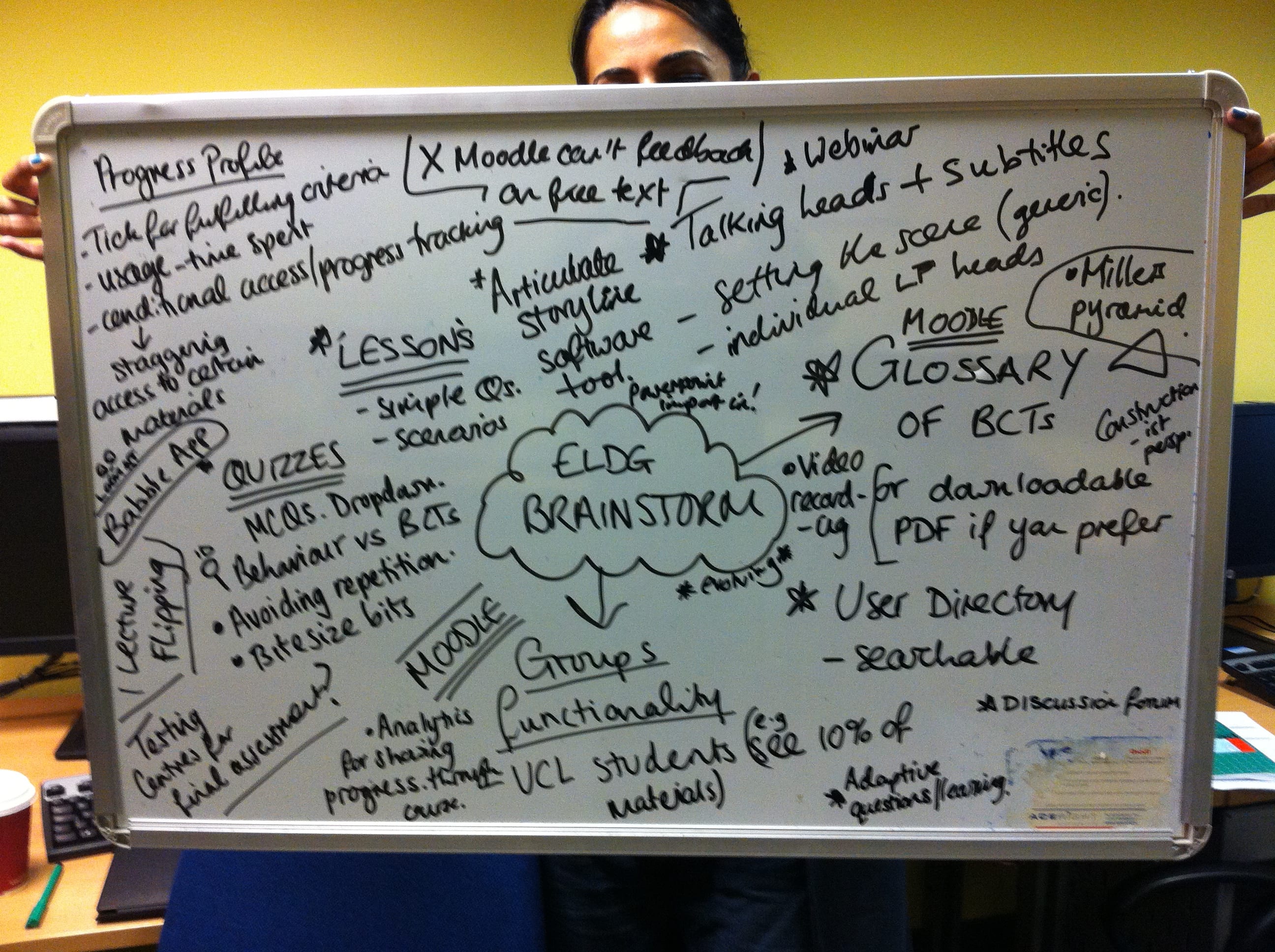Changing behaviour online with Caroline Wood’s ELDG grant
By Matt Jenner, on 8 August 2013
As mentors for an e-learning project in the Department of Clinical, Educational and Health Psychology, Vicki Dale and I met with Caroline Wood, a recipient of an E-Learning Development Grant. Caroline’s ELDG project aims to develop an independent learning resource designed around a the Behaviour Change Technique Taxonomy (BCT v1) to provide guidance and support around the reporting and evaluation of behaviour change interventions, such as smoking cessation or increased physical activity.
The BCT taxonomy is one example of a framework that prompts intervention designers to report the individual techniques that they have used. There has been a significant amount of interest amongst professionals wanting to integrate this approach within their own research and practice and in turn, a high demand for training has been generated in their accurate application. The new e-learning resource will address this demand.
We were delighted to fund this project as it is covering a lot of ground for a potentially varied audience. The outcome of building an e-learning resource from a research department means a high level of engagement with teaching and learning for a group traditionally more focused on their research. By incorporating established e-learning techniques, the resource will serve to disseminate this research to a wider audience. The resource will be made for both internal and external audiences, resulting in applications of use beyond the institution.
Following an initial meeting with Caroline to discuss early ideas for the project and how it may work as an e-learning resource, Vicki and I met with Caroline and one of her PhD students, Harveen Kaur, who will be working on the project alongside fellow PhD student Elena Panagiotopoulou. In this second session we explored the existing materials and talked about how their value may be maximised harnessing the potential for interactivity offered by Moodle. While it was not assumed that Moodle would serve as the sole platform, there were requirements which kept aligning to the tools in Moodle. Unsurprisingly, a tool built for teaching and learning can have a habit of doing that!
The discussion lead to a brainstorming session about behaviour therapy and approaches for e-learning development. We captured the outcomes of the session via a whiteboard:
Here’s a closer view:
Generally speaking, the best ideas arise from regular meetings and discussion. We spent about two hours on this occasion talking about the existing materials, how they might be translated to the e-learning platform and considering how we might add value to the resource. At this stage the team now have a mutual understanding about the development of the online resource, with Caroline and her colleagues keen to learn more about Moodle, and Vicki and myself finding more out about behaviour change interventions!
Additional sessions are required to develop the new BCT e-learning resource. First of all Caroline, Harveen and Elena need a space in Moodle to try out new approaches, having barely used it before. Alongside this, we can spend time developing a storyboard or map of the e-learning resource around defined learning outcomes. This will define the structure which will guide future development and evaluation.
 Close
Close



